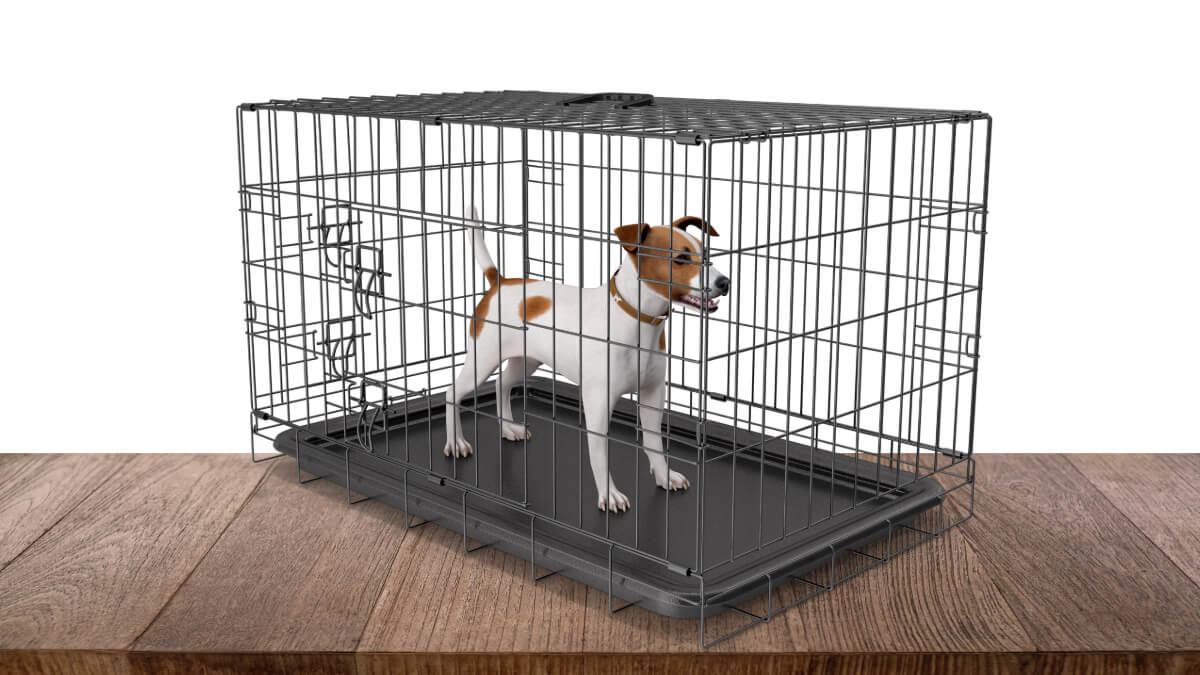When Do Catahoulas Calm Down: Proven Strategies 2024
Table of Contents
Key Takeaways: When Do Catahoulas Calm Down?
| Key Point | Detail |
|---|---|
| Understanding Catahoula Behavior | Learn about the energetic nature of Catahoulas |
| Calming Milestones | Key ages when Catahoulas start to show calmer behavior |
| Training Tips | Effective methods to help calm Catahoulas |
| Health Considerations | The role of health in a Catahoula’s behavior |
| Advanced Training Resources | Explore advanced training techniques for better control |

Catahoulas, known for their vibrant energy and intelligence, are a breed that captivates many dog lovers. However, their high energy levels often lead owners to wonder: when do Catahoulas calm down? Understanding their behavior and using effective training methods can help in managing their energetic nature.
Understanding Catahoula Behavior
Catahoulas are inherently energetic and require ample mental and physical stimulation. This breed, originating from Louisiana, is known for its versatility in hunting and herding. Their high energy is a trait that makes them excellent working dogs but can be challenging for pet owners. For insights into handling such energetic breeds, refer to our article on “How to Train a Dog to Ignore Distractions”.
Calming Milestones
Typically, Catahoulas start to show signs of calming down around the age of two to three years. However, this can vary depending on the individual dog and its environment. During puppyhood and adolescence, they are more likely to exhibit higher energy levels, which gradually decrease as they mature. A Catahoula’s calmness also depends on its daily routine, training, and exercise regimen.
Training Tips for Calming Your Catahoula:
Catahoulas Calm Down
- Consistent Exercise: Regular exercise is crucial. Engage your Catahoula in activities like running, hiking, or playing fetch. Check out our tips on “Stop a Dog from Pulling on a Leash” for an enjoyable walking experience.
- Mental Stimulation: Keep their mind engaged with puzzle toys and training games. Our article on “How to Make Himalayan Dog Chew” offers a great DIY stimulation toy.
- Obedience Training: Enroll your Catahoula in obedience classes.
For advanced training that goes beyond the basics and helps your Catahoulas calm down, explore our “IGP Dog Training” guide. - Routine Structure: A predictable routine helps in managing their energy. Ensure consistent feeding, walking, and playtime schedules.
Health Considerations
The overall health of your Catahoula plays a significant role in its behavior. Ensure regular veterinary check-ups and a balanced diet. Health issues can sometimes manifest as hyperactivity or restlessness. For more on dog health, consider reading about “Dog Health and Safety”.
Advanced Training Resources
For owners looking to further their Catahoula’s training, consider specialized training methods. Techniques like scent training, as discussed in our article on “How to Scent Train a Service Dog”, can be particularly beneficial.
Socialization’s Impact on a Catahoula’s Temperament
Socialization plays a pivotal role in shaping a Catahoula’s temperament. Introducing your Catahoula to various environments, people, and other animals from a young age can significantly aid in their overall behavior. Catahoulas calm down when they are well-socialized and they are more likely to be well-adjusted and calmer in different settings. For tips on socializing dogs, read our article on “Introducing a Reactive Dog to Another Dog”.
The Role of Breed-Specific Traits
Understanding the breed-specific traits of Catahoulas is crucial in managing their energy levels. These dogs have a strong work ethic and are often happiest when given a job or task. Channeling their energy into activities that cater to their natural instincts, such as herding, tracking, or agility training, can be highly effective. For those interested in exploring working dog training, our guide on “How to Train a Squirrel Dog Effortlessly” provides insights into training dogs for specific roles.
Impact of Spaying or Neutering
Spaying or neutering your Catahoula can have an impact on their energy levels. These procedures can lead to a reduction in certain behaviors driven by hormones, potentially contributing to a calmer demeanor. Catahoulas calm down after spaying or neutering. However, it’s important to consult with your veterinarian to understand the best time and approach for these procedures. Check our article on “Dog Health and Safety” for more health-related advice.
Alternative Training Approaches

Exploring alternative training methods can be beneficial for Catahoulas. Techniques like clicker training or reward-based training can effectively encourage calm behavior. Catahoulas calm down with alternative training methods. Understanding your dog’s individual learning style and adapting your training approach accordingly can lead to better results. Our article on “Smart X-50 Dog Training” offers a modern perspective on dog training methods.
Environmental Enrichment for Calming
Creating an enriched environment at home can help in calming your Catahoula. This includes providing a variety of toys, safe spaces for relaxation, and opportunities for sensory stimulation. Catahoulas calm down with an enriched environment. An enriched environment can prevent boredom and reduce hyperactive tendencies. For ideas on creating a stimulating environment, take a look at our tips on “How to Stop a Dog Barking in Crate”.
The Influence of Diet on Behavior
A balanced diet can influence a dog’s behavior. Foods high in protein and essential nutrients can support a healthy energy level, while foods with excessive calories or stimulants might contribute to hyperactivity. Consulting a veterinarian for a diet tailored to your Catahoula’s needs is advisable. Explore our insights on dog nutrition in the article “Can Dogs Chew on Deer Bones?”.
Recognizing and Addressing Anxiety
Sometimes, what appears as hyperactivity in Catahoulas might be a sign of anxiety. Recognizing symptoms of anxiety and addressing them through training, environmental changes, or veterinary assistance is crucial. For guidance on dealing with anxious behaviors, consider reading “How to Calm a Reactive Dog”.
The Influence of Regular Health Check-Ups
Ensuring regular veterinary check-ups for your Catahoula can play a significant role in their behavior and energy levels. Health issues, if undetected, can sometimes manifest in heightened activity or anxiety.
Key Health Checks for Catahoulas:
- Routine Physical Exams: To monitor overall health and vitality.
- Dental Check-Ups: Oral health can impact a dog’s comfort and behavior.
- Joint and Bone Health: Especially important for active breeds like Catahoulas.
- Dietary Consultations: Tailoring diet for optimal health and energy levels.
For more on maintaining your dog’s health, visit our section on “Dog Health and Safety”.
Advanced Behavioral Training Techniques
Advanced training techniques can be highly effective in managing a Catahoula’s energy and promoting calm behavior.
| Technique | Description | Benefits |
|---|---|---|
| Agility Training | Navigating obstacle courses | Enhances focus, burns excess energy |
| Flyball | Team sport involving fetching and hurdles | Builds teamwork, expends energy |
| Nosework | Scent detection and problem-solving activities | Mental stimulation, improves focus |
| Herding Trials | Engaging natural herding instincts | Channels natural instincts, reduces boredom |
For detailed guidance on advanced training, explore our article on “Personal Protection Dog Trainer”.
The Role of Genetics in Behavior
Understanding the genetic makeup of Catahoulas can offer insights into their behavior. Catahoulas are bred for their working ability and high energy, traits that are inherently part of their genetic makeup.
Genetic Traits Influencing Behavior:
- Prey Drive: Natural instinct to chase, common in hunting breeds.
- Work Ethic: Inclination towards staying active and engaged.
- Temperament: Inherent traits like sociability, alertness, and responsiveness.
For more on breed-specific behaviors, see our article on “How to Train a Dogo Argentino”.
Importance of a Supportive Community
Engaging with a community of Catahoula owners can provide support, tips, and shared experiences that can be invaluable in understanding and managing your dog’s behavior.
Benefits of Community Engagement:
- Shared Experiences: Learn from others’ successes and challenges.
- Training Tips: Exchange effective training techniques and resources.
- Behavioral Insights: Gain a broader perspective on breed-specific behaviors.
To connect with a dog training community, read about “How to Become a Dog Trainer in Missouri”.
Recognizing the Need for Professional Help
Sometimes, enlisting the help of a professional dog trainer or behaviorist is the best course of action, especially if you’re facing persistent behavioral challenges with your Catahoula.
Signs You Might Need Professional Help:
- Persistent Hyperactivity: Despite consistent training and exercise.
- Anxiety or Aggression: That is not manageable through usual methods.
- Lack of Response to Training: When standard methods don’t yield results.
For those considering a career in dog training, our guide on “Train Dogs as Service Animals” offers valuable insights.
Understanding the Lifespan Development of Catahoulas
It’s crucial to understand that a Catahoula’s energy levels and temperament evolve over their lifespan. Recognizing these changes helps in adapting your approach to their training and care.
Lifespan Development Stages:
| Age Range | Behavioral Traits | Care Focus |
|---|---|---|
| Puppy (0-1 year) | High energy, playfulness | Basic training, socialization |
| Adolescent (1-3 years) | Gradual calming, curiosity | Advanced training, exercise |
| Adult (3-8 years) | More settled, consistent | Routine maintenance, mental stimulation |
| Senior (8+ years) | Slower, less active | Health monitoring, comfort care |
For more on training through different life stages, read our article on “How to Train a Rabbit Dog”.
The Impact of Regular Exercise and Play
Regular exercise and play are vital in managing a Catahoula’s energy levels. Structured playtime and consistent exercise routines can significantly contribute to a calmer demeanor. Catahoulas calm down with regular exercise and play.
Exercise and Play Ideas:
- Long Walks or Runs: Essential for physical and mental health.
- Fetch and Frisbee Games: For fun and energy expenditure.
- Swimming: A great low-impact exercise for dogs.
- Agility Training: Stimulating both mentally and physically.
For ideas on play and exercise, consider our article on “10 Best Dog Muzzles”, which can be useful during active play.
The Power of Positive Reinforcement
Positive reinforcement is a key strategy in training and calming a Catahoula. Rewarding desired behavior with treats, praise, or play encourages repetition of these behaviors. Catahoulas calm down when positive reinforcement is used effectively.
Positive Reinforcement Techniques:
- Treat Rewards: For obeying commands or calm behavior.
- Praise and Affection: Reinforcing good behavior with verbal praise and physical affection.
- Playtime Rewards: Using play as a reward for calm or obedient behavior.
For more on positive reinforcement techniques, our article on “Dog Doesn’t Want to Walk in the Morning” offers insights into motivating dogs.
Creating a Calm Home Environment
The home environment plays a significant role in a dog’s behavior. A calm and stable home can help in soothing an energetic Catahoula. Catahoulas calm down with a calm and stable home environment.
Tips for a Calm Home:
- Dedicated Quiet Spaces: Areas where the dog can relax undisturbed.
- Consistent Routine: Predictable schedules for feeding and activities.
- Reduced Household Stress: A peaceful home atmosphere contributes to a dog’s calmness.
Read about creating a conducive environment in our article on “Why Does My Dog Bark When I Stare at Him?”.
Final Thoughts
Understanding when and how Catahoulas calm down involves a mix of breed knowledge, appropriate training, health care, and environmental factors. By employing the strategies outlined, you can effectively manage your Catahoula’s energy levels and enjoy a harmonious relationship with your canine companion.







